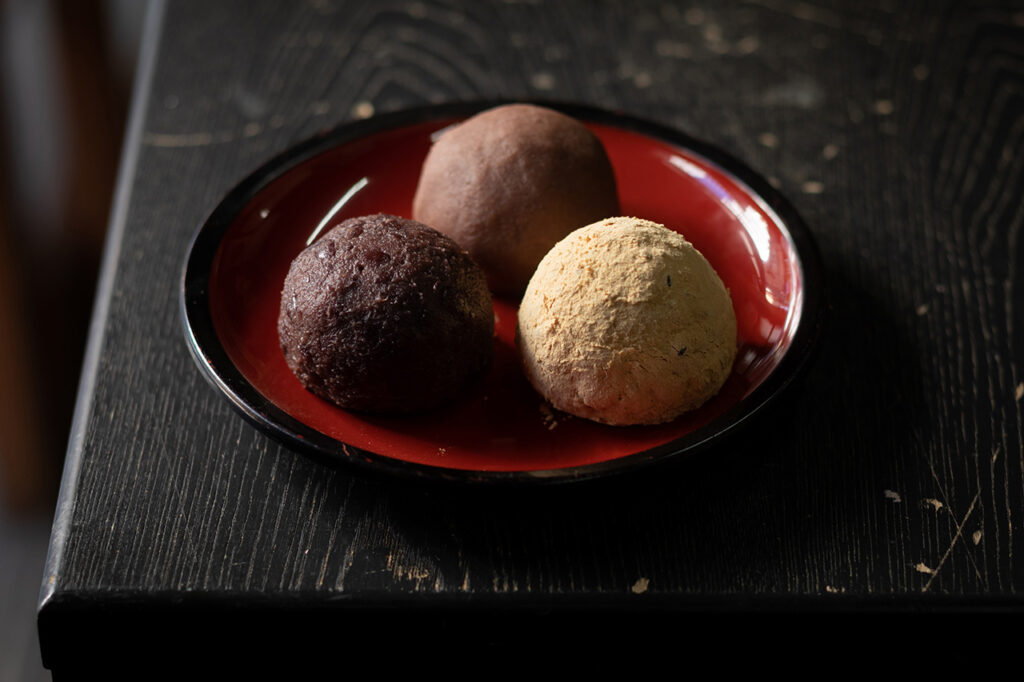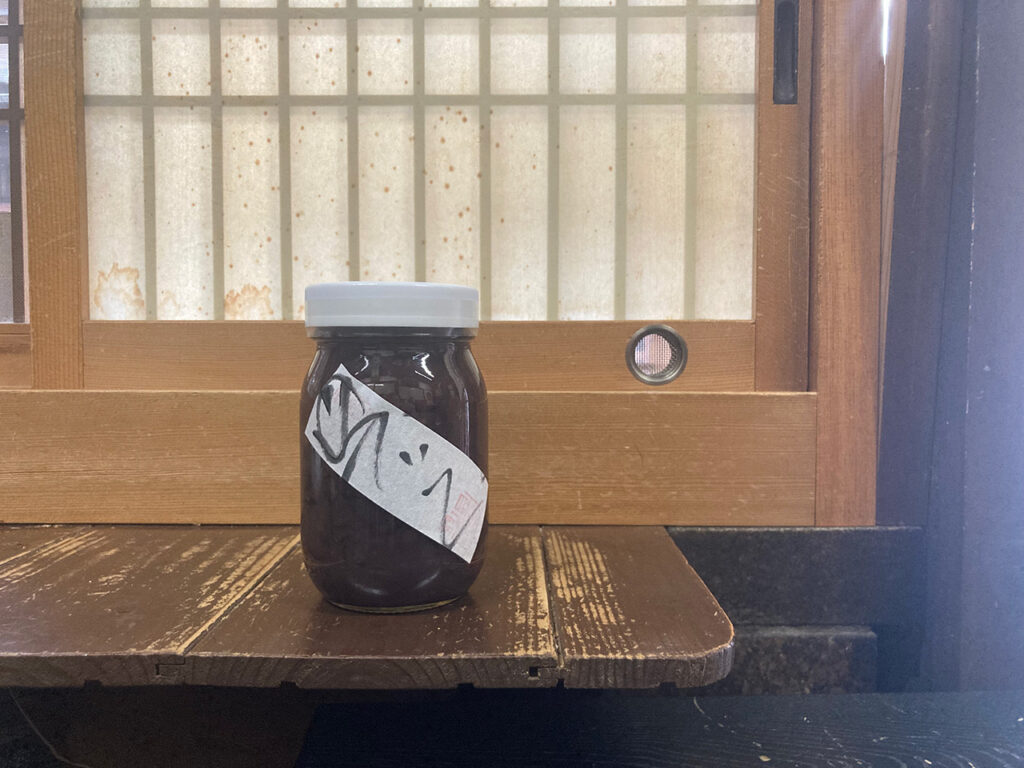


The masterpieces that have been loved throughout the ages have the consistent feelings of their makers, even though their generations have changed. In this interview, we asked the owner about the thoughts behind the Kyoto masterpieces and their future.
One minute walk southwest from Gojo Subway Station. Founded in 1897, this store specializing in o-hagi has fans all over Japan.
After the third generation regrettably closed the restaurant, the current owner, Shozo Imanishi, who is his grandson, revived it in 2002 and it became a hot topic. Looking back on his years of training, he says, "It was only a few years ago that I was able to stabilize a taste that I was satisfied with.


The time-consuming and painstakingly made bean-jam o-hagi, which is stirred with a cypress stick using an okudo-san still in service, has a straightforward flavor that once you have tasted it, you will never forget it.
Freshly made o-hagi are displayed in the showcase every morning and come in three varieties: tsubuan, koshian, and kinako (soybean flour), at 220 yen each. It takes two days to make the tsubu-an, which makes you smile because even the skin is soft and fluffy, and three days to make the koshi-an, which melts in your mouth like a mousse.


The sweetness is light and elegant because it is made without syrup. The light and fresh o-hagi make you want to reach for another one. You will want to visit just in time for opening time, as they sell out in the blink of an eye.

3 kinds: tsubuan (sweet red bean paste), koshian (sweet red bean paste), and kinako (soybean flour), 220 yen each

I want to share the deliciousness of [Imanishiken] with my friends. However, I can't give the o-hagi I eat on the same day to those who are far away. We started to offer our regular customers a new type of o-hagi, which is neither anko (red bean paste) nor paste, but boiled azuki beans themselves, for 980 yen.

Anteiku 980 yen

It was originally a makana-like item that was given out to relatives and acquaintances. It is delicious on ice cream, floats on white rice balls, or with unsweetened yogurt.
Shozo says, "Every day, we are constantly inventing new ways to make our food, and time flies by. He thoroughly examines the ingredients and fine-tunes the soaking time depending on the season to deliver a consistent taste. On weekends, his two sons, who grew up watching his honest back, can be seen in the workshop. We cannot take our eyes off of Imanishiken in the future.


Over 600 interviews per year! An order site carefully selected by the editors who knows Kyoto and Shiga.
nowOfficial LINE friend registration500 yen OFF coupon is being issued!
Distributed every Friday morning at 8:00 am! From new restaurant information to event information that we want to share with you, We deliver articles about Kyoto that are useful to know. About 20,000 people have registered.Click here to add a friend!
 News
News Feature article
Feature article Featured event
Featured event